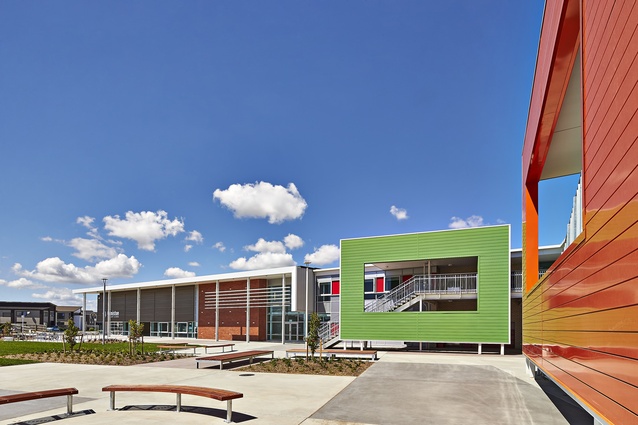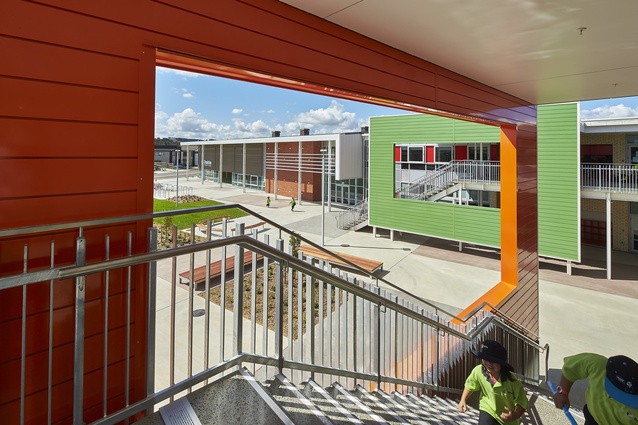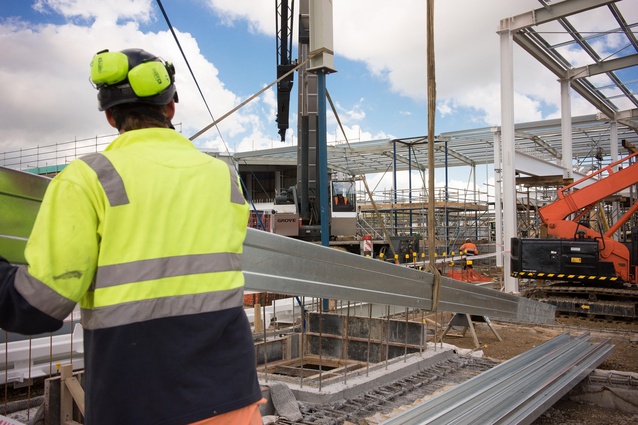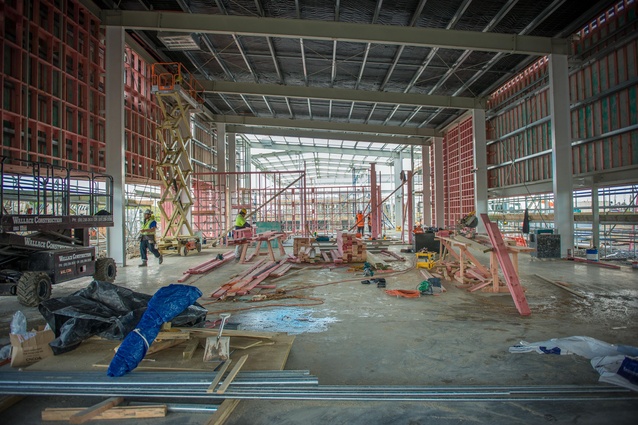Class act
Michael Bowman laughs when asked what will be the thing he remembers most about the Ormiston Primary School build. It was the sheer speed of it, says the Arrow International project manager.
Bowman and his team have every right to laugh, the project was tendered, already some way through the detailed design process as of February 2014 and was finally awarded in April that year, leaving just nine full months to turn a greenfield site in the middle of Auckland City’s latest new-town development at Flat Bush into a thriving, fully functional, state-of-the-art primary school before the first kids walked through the door on the third of February this year.
It wasn’t as if it was an easy or simple build either, says Bowman. “It’s beautifully designed; a very vibrant building in terms of the colours and the materials used, and it’s certainly very eye-catching now it’s finished, but all that added to the complexity of the build, which of course impacted on the overall challenge of completing the project on time.”
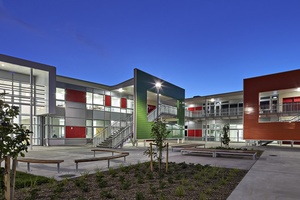
Take the external cladding for example, he says. “There were several different cladding materials employed, including brick, longrun iron (used horizontally and vertically) and aluminium weatherboard, as well as large expanses of curtain-wall glazing and big windows. As if that wasn’t complex enough, the design incorporated a number of cantilevered edges across the façade, a big seismic joint in the middle of the building and two large external staircases, with aluminium weatherboard-clad picture frame elements, which is quite a cool feature, but again offered their own set of challenges.”
Commissioned by the Ministry of Education, Ormiston Primary School is set over 2,738m². It includes a gymnasium/recreation centre that doubles as the school’s assembly hall, an administration zone, library, five interconnected learning environments or commons – each the size of three traditional classrooms and designed so that several classes can use the same space at the same time, encouraging enquiry-based learning – and a dedicated learning area for Kelston Deaf Education Centre (KDEC) students.
The two-storey building encloses a multifunctional courtyard, opening up to the north and the east to maximise sunlight and to protect children against prevailing winds. The playing fields, hard courts and parking are located on the southern side of the school.
Project architect, ASC Architects associate Kevin Sanderson, says it was exciting to be able to develop the plan and translate the ministry’s vision for a state-of-the-art learning environment into a vibrant building form, designed to be a focal point for the growing Flat Bush community and to interact with future buildings planned for the area. “New Zealand is recognised by the OECD as a world leader in the delivery of public education and the government has used this project as an opportunity to set a further benchmark in public school buildings.”
Sanderson says he’s particularly proud of the KDEC satellite unit, which allows for those students to be fully integrated throughout the school, whilst having their primary facility central to the plan, on the first floor above the library.
Bowman also points to the build’s environmental credentials – Ormiston is designed and was built to achieve a 5 Star Green Star Building rating; the acoustic and insulation challenges caused by Ormiston being situated beneath an Auckland Airport flight path; and the situation of the site within a burgeoning new town, all adding to the complexity.
“It was also a pretty big civil job,” says Bowman. “The site is massive and required a lot of civil works to be carried out, made more difficult as it was a very busy area, on a main arterial route surrounded by houses.”
Given the tight timeframe, Arrow’s team also adopted a rapid top-down construction approach, unusual on a two-storey build. The concrete footings were constructed first and the structural steel erected straight onto the footings, so work on the roof and top floor could be started and other trades brought in much earlier than with traditional construction methods.

The build speed was also helped by installing the precast concrete ribs for the floor through the sides of the building using a hiab, rather than through the top with a crane, and starting the mechanical and electrical installation (and this was a state-of-the-art build in terms of the technology incorporated) before the outside cladding had been placed; using temporary waterproofing to ensure it was installed safely.
Bowman credits the teamwork between Arrow, ASC, and the school’s Establishment Board of Trustees for ensuring the building was completed on specification to budget and on time.
Sanderson agrees: “The project’s success can be directly attributed to the vision of the ministry, the expertise and dedication of the trustees and the dedication of the construction team to appreciate the design intention and work with the cost implications and the complexities of building the project without compromising design.”
“There wasn’t a day the team wasn’t working,” says Bowman, including Christmas and the New Year holidays.
As for missing Christmas, Bowman’s not that sad, saying it was an honour to attend the school’s opening and karakia on the first day.
“It was a great challenge and a really rewarding experience to build something this creative and technologically advanced and then see the kids actually arriving really excited on the first day at their new school.”

